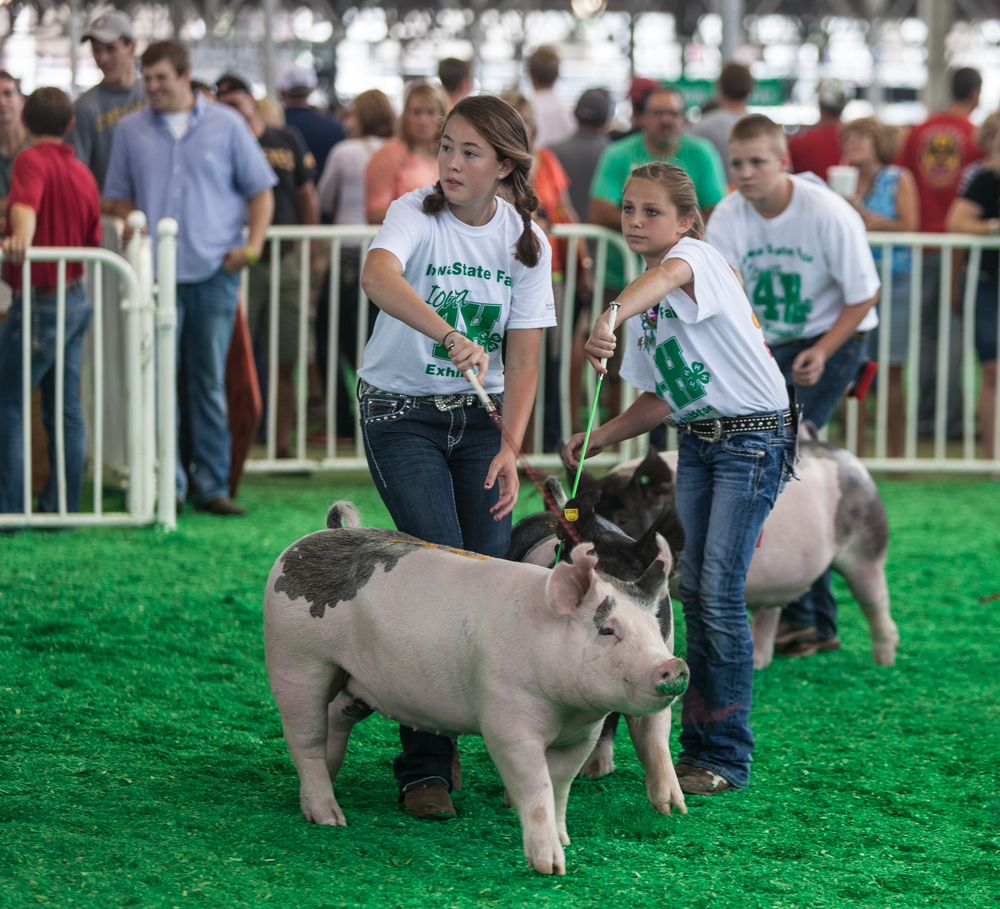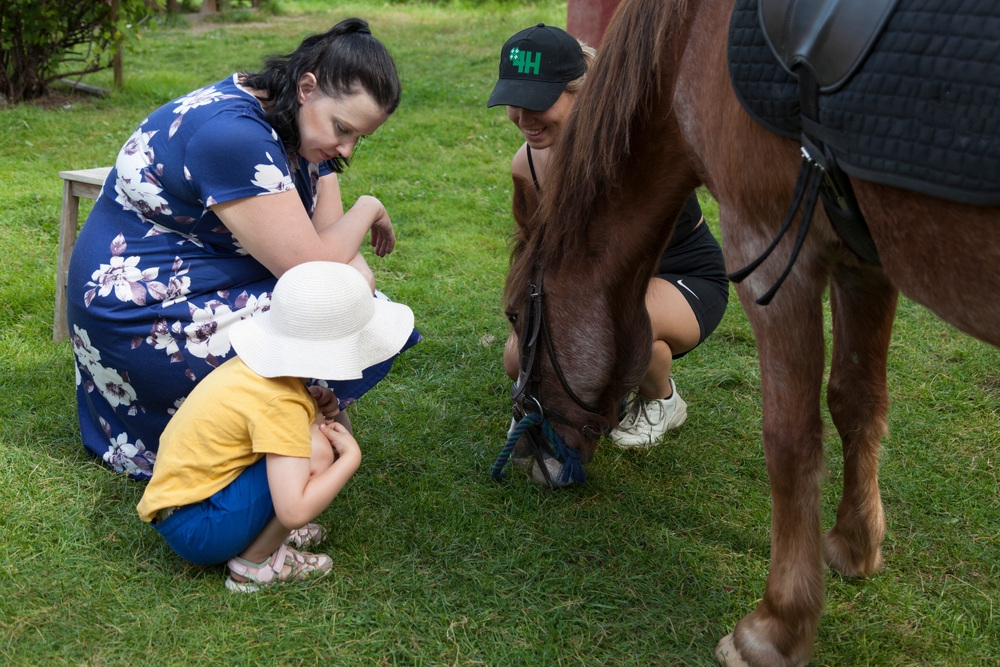
4-H is a global youth development organization. It empowers young people to reach their full potential through hands-on learning and experiential education. Founded in the United States in 1902, 4-H has since expanded to over 50 countries worldwide and serves millions of young people every year.
But what does the name 4 H actually stand for, and how is it connected with horse riding? Let’s get the hang of the history and meaning behind this iconic organization.
The History of 4-H
4-H is an American idea, and it was founded as the “Tomato Club” by a group of young people in Clark County, Ohio, in 1902. The club was designed to teach members about agriculture, horticulture, and home economics. As such clubs grew in popularity, they were renamed to “Corn Clubs” for boys and “Canning Clubs” for girls. Soon after, they were rebranded to the “4-H Club.” The first federal document with its mention was dated 1918.
The 4-H motto, which is “To make the best better,” was adopted in 1924. It reflected the organization’s focus on continuous improvement and personal development. In the early days of 4-H, club members learned about a variety of topics, including livestock care, gardening, and cooking. Today, the 4-H youth development program offers a wide range of programs and activities. They cover everything from science and technology to leadership and community service.
What Does 4-H Stand For?
The name “4-H” stands for “Head, Heart, Hands, and Health.” These four values are at the core of 4-H’s mission and are woven into every aspect of the organization’s programming.
- Head: 4-H helps young people develop critical thinking skills. It encourages them to use their heads to solve problems and make informed decisions.
- Heart: 4-H promotes compassion and kindness. It teaches young people to use their hearts to serve their community and make a positive impact in the world.
- Hands: 4-H encourages hands-on learning and experiential education. It helps young people develop practical skills and a sense of accomplishment.
- Health: 4-H promotes healthy lifestyles. It encourages the youth to take care of their physical, mental, and emotional well-being.

4-H Programs and Activities
The 4-H youth development program offers a wide range of programs and activities to help young people develop the life skills and values outlined in the 4-H motto. Some popular programs include:
- 4-H clubs. Local 4-H clubs offer young people the opportunity to participate in hands-on learning and leadership development activities. Club members typically meet on a regular basis and participate in a variety of projects and events.
- 4-H camps. 4-H camps offer young people the chance to have fun, make some friends, and learn new skills in a safe and supportive environment. Many 4-H camps offer a variety of activities. These include outdoor education, leadership development, and team building.
- 4-H conferences and events. 4-H provides young people with the opportunity to learn from experts. They can attend community service activities, school enrichment programs, workshops, and more. It also provides a network with other 4-H members and participates in leadership development activities.
- 4-H youth programs. 4-H offers a variety of youth programs that focus on specific areas of interest. These include science, technology, engineering, math (STEM), healthy living, and citizenship.
4H Pledge and Motto
The 4H motto is “To Make the Best Better.”
The 4H pledge is: “I pledge My Head to clearer thinking, My Heart to greater loyalty, My Hands to larger service, and My Health to better living for my club, my community, my country, and my world.”
The 4-H pledge is recited at meetings and local and national programs.
4H Emblem
The 4-H emblem is a four-leaf clover with 4-H letters in the center. Each leaf represents the Head, Heart, Hands, and Health – the 4 values the program focuses on. This emblem is federally protected under Section 18 US Code 707.

4-H Horse Practical Educational Program
Horse riding is a popular activity within the 4-H program, with many local clubs offering equine-related projects and events. 4-H equine programs provide young people with the opportunity to learn about horse care, equine management, and riding skills. This way, caring adults are ensured their youngsters are actively engaged in new activities.
Through hands-on learning and experiential education, 4-H equine programs help young people develop a range of skills, including:
- Horse care. 4-H equine programs teach young people how to properly care for horses, including feeding, grooming, and general care.
- Equine management. 4-H equine programs are about teaching youth the management of horse-related facilities and resources, such as stables and pastures.
- Riding skills. 4-H equine programs provide young people with the opportunity to learn or improve their riding skills through a variety of activities. These include English and Western riding, showmanship, and trail riding.
- Leadership and teamwork. 4-H equine programs encourage young people to develop leadership skills and work effectively as part of a team.
4-H equine programs also provide young people with the opportunity to participate in competitions and events, such as horse shows and rodeos. These events give young people a chance to showcase their skills and compete against other 4-H members from around the country.
In addition to horse riding, 4-H also offers a range of other equine-related programs, including horse breeding, horse judging, and horsemanship.
4H Horsemanship and Its Levels?
4-H horsemanship is divided into four-five levels, which range from beginning to advanced. At each level, 4-H members learn more about horse care, management, and handling, as well as the safe operation of horses. 4-H also provides 4-H members with the opportunity to participate in competitions and events where they can showcase their skills.
For instance, the Nebraska 4-H program includes four levels:
Level 1. 4-H members learn the basics of horse care, basic riding skills, and safety.
Level 2. 4-H members build on their knowledge from Level 1 with more in-depth instruction on riding techniques, equine health assessment, and tack selection and fitting.
Level 3. 4-H members hone their skills in Level 2 while learning how to ride a variety of horses in multiple disciplines.
Level 4. 4-H members focus on advanced horsemanship, including bettering their control over the horse’s movements with precision and refinement.
To pass levels 1-4, 4-H members must complete a 4-H Horse Project Record Book and participate in the 4-H Recognition Program.

How Much Does the 4H Horse Program Cost?
The cost of 4-H membership varies depending on the program and location. The price tag typically ranges between $25 – $100 annually per child.
Conclusion
4-H is a youth practical educational program as a form of school-age child care. It empowers young people to reach their full potential through hands-on learning and experiential education. Adult volunteers take part in the program to help the younger generation find special interest groups. The name “4-H” stands for “Head, Heart, Hands, and Health.” It reflects the organization’s focus on critical thinking, compassion, practical skills, and healthy living. 4-H offers a wide range of programs and activities, clubs, and after-school programs. These include horse riding, which helps young people develop a range of skills and values. Whether through horse riding or other activities, 4-H helps young people become responsible, caring, and contributing members of their communities.
